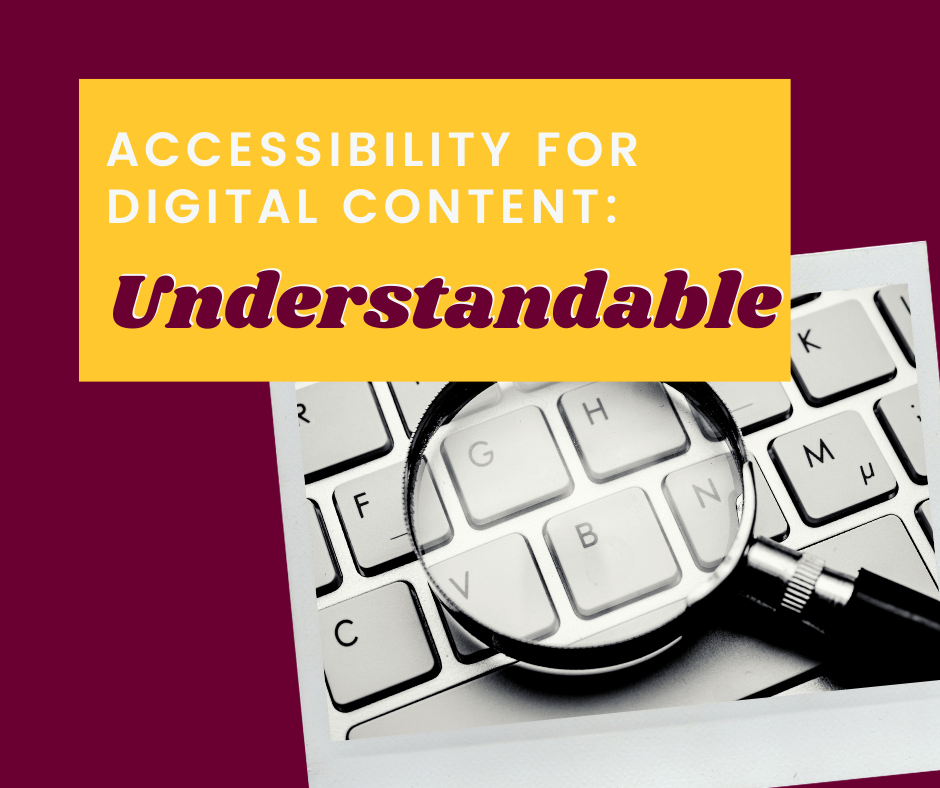This summer, we featured an article in our weekly newsletter, Considerations for Digital Content Accessibility. This article outlined the World Wide Web Consortium (W3C) P.O.U.R acronym for content creators (faculty members) to consider to improve student accessibility to course content. Each week, for the next three weeks, we will focus on one of the following areas: Perceivable, Operable, Understandable, and Robust. If you missed the previous articles, they can be found on the CIS Blog.
Understandable
In order to have understandable course content, the content must be consistent and predictable in its design and usage patterns. In addition, content must always be audience-appropriate.
In order to make digital course content understandable:
- Use a sensible document design. Students don’t want interfaces to surprise them, nor do they want to waste time decoding a new “look” for each document. Document design should be intuitive.
- Use a consistent, useful document structure. Heading styles should not change from page to page or even week to week in course documents.
- Be careful to spell out an acronym, using the acronym in parentheses the first time you introduce it. APA suggests only using an abbreviation if you will use the term more than three times.
- Use idioms/slang cautiously and with your audience in mind. Idioms/slang are not always clearly translated to international students or among different generations. Being aware of who is using your content can prevent confusion for the end-user.
- Consider your audience’s knowledge level when using technical terms/jargon. Include a link to a glossary for reference, either a website or your own glossary at the end of the document.
Our staff is diligent in keeping abreast of the highest standards for compliance and is here to assist and support faculty as needed. If you need support with making your digital content accessible or would like it reviewed for compliance, contact CIS at cis@cmich.edu or by calling (989)774-3615.

